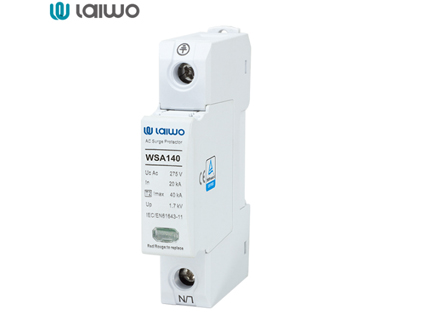Next: How to Choose the Right Disconnect Switch According to the Specific Electrical Load

In modern households, electronic devices have become an indispensable part of daily life. From smartphones and laptops to high - end home entertainment systems, these devices are vulnerable to electrical surges. A surge protector is a crucial device that can safeguard your electronics from sudden voltage spikes. However, with a wide variety of surge protectors available in the market, choosing the right one for home use can be a daunting task. Here are some key factors to consider.

1. Joule Rating
The joule rating is one of the most important specifications of a surge protector. It measures the amount of energy the surge protector can absorb before it fails. A higher joule rating means the surge protector can handle larger and more frequent electrical surges. For basic home electronics such as lamps and small chargers, a surge protector with a joule rating of 300 - 600 joules may be sufficient. However, for more expensive and sensitive devices like computers, televisions, and audio systems, a joule rating of 1000 joules or higher is recommended. This ensures better protection against powerful surges that could potentially damage your valuable electronics.
2. Clamping Voltage
The clamping voltage indicates the level at which the surge protector starts to divert excess voltage away from your devices. A lower clamping voltage is generally better because it means the surge protector will react more quickly to voltage spikes and protect your electronics at a lower voltage threshold. For home use, a clamping voltage of 330 volts or less is ideal. This ensures that even small surges are intercepted before they can reach your devices and cause harm.
3. Response Time
The response time of a surge protector refers to how quickly it can detect and respond to an electrical surge. A fast - responding surge protector is essential for protecting sensitive electronics. Look for a surge protector with a response time of less than one nanosecond. This ensures that the surge protector can start diverting excess voltage almost instantaneously, minimizing the risk of damage to your devices.
4. Number of Outlets
Consider the number of outlets you need based on the number of devices you plan to connect to the surge protector. If you have a home office with multiple devices such as a computer, monitor, printer, and scanner, you'll need a surge protector with more outlets. Additionally, pay attention to the layout of the outlets. Some surge protectors have wide - spaced outlets that can accommodate large power adapters without blocking adjacent outlets, which is a convenient feature.
5. Type of Protection
There are different types of surge protection technologies available. Metal Oxide Varistors (MOVs) are the most common type used in residential surge protectors. They are cost - effective and can handle a wide range of surge levels. Some high - end surge protectors may also incorporate additional protection technologies such as Gas Discharge Tubes (GDTs) for enhanced protection against very large surges. While MOV - based surge protectors are suitable for most home applications, if you live in an area prone to severe lightning storms, a surge protector with additional GDT protection may be a better choice.
6. Warranty and Indicator Lights
A good warranty is a sign of a reliable surge protector. Look for a surge protector that comes with a warranty of at least one year. Some manufacturers even offer lifetime warranties, which provides added peace of mind. Indicator lights on the surge protector can also be very useful. They can show whether the surge protector is functioning properly and if it has been damaged by a surge. A green light usually indicates normal operation, while a red light may signal that the surge protector needs to be replaced.
7. Brand Reputation
Choose a surge protector from a reputable brand. Well - known brands often have a better track record of quality and reliability. They are more likely to adhere to strict manufacturing standards and offer better customer support. You can read online reviews and check consumer reports to get an idea of the reputation of different brands.
In conclusion, choosing the right surge protector for home use requires careful consideration of several factors, including joule rating, clamping voltage, response time, number of outlets, type of protection, warranty, and brand reputation. By taking these factors into account, you can select a surge protector that provides effective protection for your home electronics and gives you peace of mind.
INQUIRY NOW